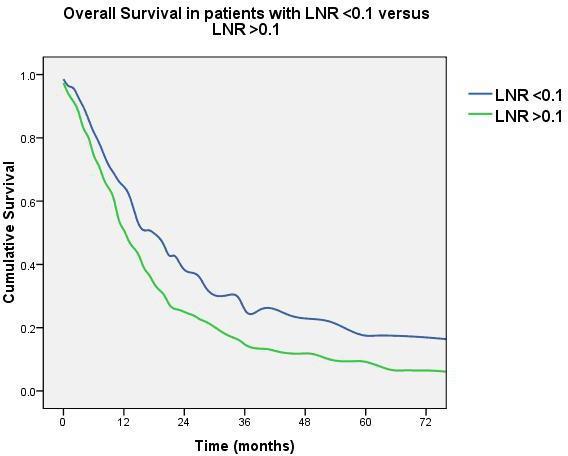|
Back to 2014 Annual Meeting Posters
Nodal Counts and Lymph Node Ratio Impact Survival After Distal Pancreatectomy for Pancreatic Adenocarcinoma
Awais Ashfaq*, Richard J. Gray, Barbara a. Pockaj, Nabil Wasif
Surgery, Mayo Clinic, Phoenix, AZ
Background
The number of lymph nodes required for accurate staging after distal pancreatectomy for pancreatic adenocarcinoma is unknown. We evaluated the impact of total number of lymph nodes examined (NNE) and the lymph node ratio (LNR-positive nodes/total nodes examined) on survival in patients undergoing distal pancreatectomy for pancreatic adenocarcinoma.
Methods
The Surveillance, Epidemiology and End Results (SEER) database was used to identify 1473 patients who underwent distal pancreatectomy for pancreatic adenocarcinoma from 1998-2010. Data for patient age, gender, tumor stage, tumor grade, histology, NNE and LNR was studied for each patient to evaluate 5-year overall survival using log-rank tests and Kaplan-Meier survival estimates.
Results
The median NNE was 8. No nodes were examined in 232 (16%) of patients and 843 (57%) had <10 NNE. The 10 LN cut off was statistically determined by testing each cut off from 1 onwards to see where the KM curves diverged and were associated with a high enough chi-squared value and p <0.05. Of patients who had at least one node examined, 612 (49%) were node positive. In the node negative sub-set, median and 5-year overall survival for patients with ≤ 10 NNE was significantly worse than patients with > 10 NNE (16 vs. 20 months and 13% vs. 19% respectively, p <0.011). For node positive patients there was no difference in survival between patients with one or greater number of nodes involved. Patients with LNR ≤ 0.1 had better 5-year overall survival compared with patients with LNR >0.1 (17% vs. 6%, p = 0.002)
Discussion
Patients with pancreatic cancer undergoing distal pancreatectomy should have at least 10 lymph nodes examined to avoid understaging. For node positive patients, LNR may be a better prognostic indicator than total number of positive nodes.
 Figure. Kaplan Meier curve showing the 5 year overall survival in patients with LNR ≤ 0.1 and LNR > 0.1, (17% vs. 6%, p = 0.002).
Back to 2014 Annual Meeting Posters
|


